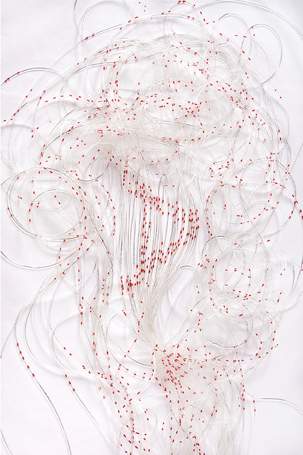Convoluted spy capers and vital information passed on to secret agents, enabling future counterattacks against invaders: This is the picture of the immune system that is emerging from the advanced imaging system in the lab of
Dr. Guy Shakhar of the Faculty of Biology. Millions of specialized immune cells are constantly on the move, gathering intelligence on foreign invaders, analyzing it, evaluating the situation and coordinating the body’s attack against harmful pathogens. But the system’s complexity leaves it open to misguided attacks that can harm the body it is meant to protect.
Shakhar and his research group want to understand the workings of the immune system in health and illness – how it reacts to the news of invasion, its strategy for initiating an offensive, how it selects its weaponry. But even before these, how do the various cells pass on information on the nature of the enemy? And could researchers enhance a desired reaction (say, destroy a tumor with “killer” cells) or prevent a harmful one (as in autoimmune disease)?
In one study, the team investigated dendritic cells in the intestine that sometimes mistakenly present antigens – scraps of protein that identify invaders – taken from “helpful” bacteria. When this mistake leads to the activation of other immune cells, the result is inflammation and the onset of Crohn’s disease.
A better understanding of how this information is passed on and where the breakdowns occur could aid in the development of new treatments for Crohn’s and other inflammatory diseases.
Dr. Guy Shakhar's research is supported by the Clore Center for Biological Physics; the Kirk center for Childhood Cancer and Immunological Disorders; the Jeanne and Joseph Nissim Foundation for Life Sciences Research; the Leona M. and Harry B. Helmsley Charitable trust; the Wolfson family Charitable Trust; the Dr. Dvora and Haim Teitelbaum Endowment Fund; Simone Pastor, Monaco; and the estate of John M. Lang.
Two liquids – one colored, the other transparent – run through a random arrangement of tubes reminiscent of an arterial system, possibly encoding mysterious information. As the “message” flows through the tubes, the question arises (even if we give up for a moment on deciphering the code): Can one reproduce the pattern or predict the next stages of its development?
Julius Popp, b. Germany, 1973, lives and works in Leipzig. His work has been displayed in settings around the world, including MoMA in New York, the Victoria and Albert Museum in London and the Moscow Art Biennale.
